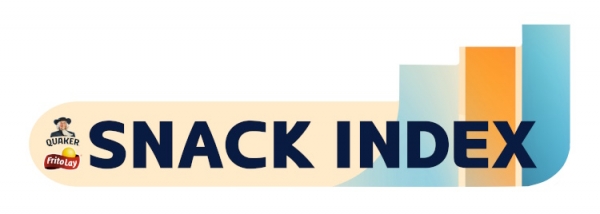The Index confirms what many of us are feeling: that there are simply not enough hours in the day. In fact, 80% of Americans have just 30 minutes to prepare and enjoy meals, which is less time than their average work commute and favourite TV show. This burden is most acutely felt by younger generations (85%) – and with no sign of letting up – 60% of consumers expect these demands to increase in the new year.
Therefore, the Index’s first trend is the Time Crunch Dilemma, which further blurs the line between snacking and meals.
In 2024, Americans will shun hours spent marinating, chopping, roasting and plating in favour of the ‘no-prep dinner’ rooted in favourite snack products.
“While our most recent Snack Index confirms that time is scarce, the data also reinforces that consumers are fiercely passionate about their food preferences,” said Denise Lefebvre, senior vice president of R&D for PepsiCo Foods.
“Frito-Lay and Quaker have a tremendous opportunity to continue meeting the evolving needs of our consumers. As we look to 2024, it has never been more important for us to infuse that inspiration with innovation, delivering on our promise of more smiles with every bite.”

A dash to dine: According to the Index, the average American has only 52 total minutes per day to prepare, eat and enjoy their meals. One-third report having even less time, scraping together less than 30 minutes a day to prep and enjoy meals.
Snacks move to centre plate: More consumers are integrating their favourite snack products into meals, up 35% over previous years. Once a week, more than 50% proudly use snacks as a key ingredient in no-prep dinners, while more than one-third seize this opportunity multiple times a week.
Top truths: When asked why snacks are an important part of their no-prep repertoire, 51% rationale a yearning for a specific snack, while 44% are just too busy to cook.
#GirlDinner Debunked: The internet might have dubbed snack-focused meals as #GirlDinner, but in 2024, the trend is for everyone. Men (92%) report being just as likely to use snack foods in meals as women (93%), with 36% pushing snack and meal boundaries more than in previous years.
Introducing the Snack Savant

The rise of the self-proclaimed Snack Savant will undoubtedly make waves in 2024. There is no shame in their snack game, as Savants proudly embrace all things food, adventure and community:
Millennials (83%) and Gen Z (82%) are most likely to embrace this title, with the majority of these Snack Savants also being city dwellers (77%). They are resourceful – 55% report their favourite snack combinations are inspired by what is already in the pantry – and lean on social media for additional ideas (32%).
80% of Snack Savants believe that combining multiple food products to create the perfect bite is an art form. While 65% admit to having eccentric snack combos, they are not the slightest bit embarrassed and will proudly “shout their unique combos from the rooftops”.
However, this is where the Index’s third trend comes into play. This year, more than ever, snacking will be centred on the importance of purpose, protein and packing a punch.

Protein power: 55% of Americans cite protein as the most important nutritional attribute of any snack. Compared to previous years, an overwhelming 79% of consumers admit it’s more critical than ever – especially for those most crunched on time (80%).
Energy boost: At least once a week, 60% of consumers look to their favourite snack to provide energy. Millennials (72%) are by far the generation most in need of a pick-me-up, compared to Gen Z (62%), Gen X (61%) and Baby Boomers (46%). Parents have everyone beat, with 72% leveraging snacks for energy.
One caveat though: Across generations, 74% of consumers refuse to sacrifice taste when it comes to their snacks. Baby Boomers are the most unwilling to compromise on taste (84%), followed by Gen Xers at 75%.
The US Snacking Index tapped a national sample of 2,000 national representative US adults, ages 18+ between 6-12 December 2023. Interviews were conducted using an email invitation and an online survey. The data has been weighted to ensure an accurate representation of the U.S. adult population ages 18+.
